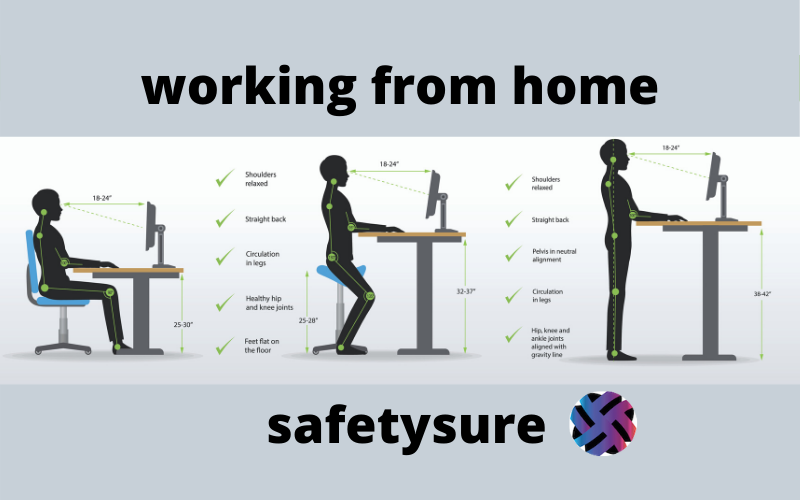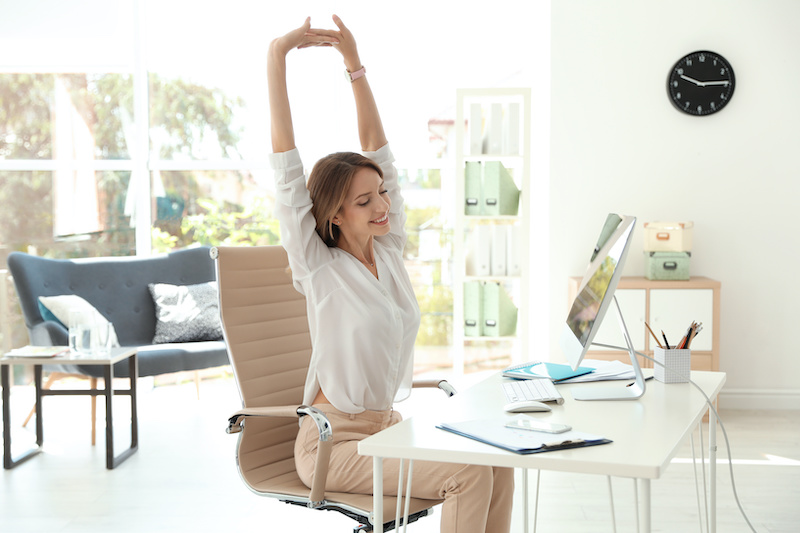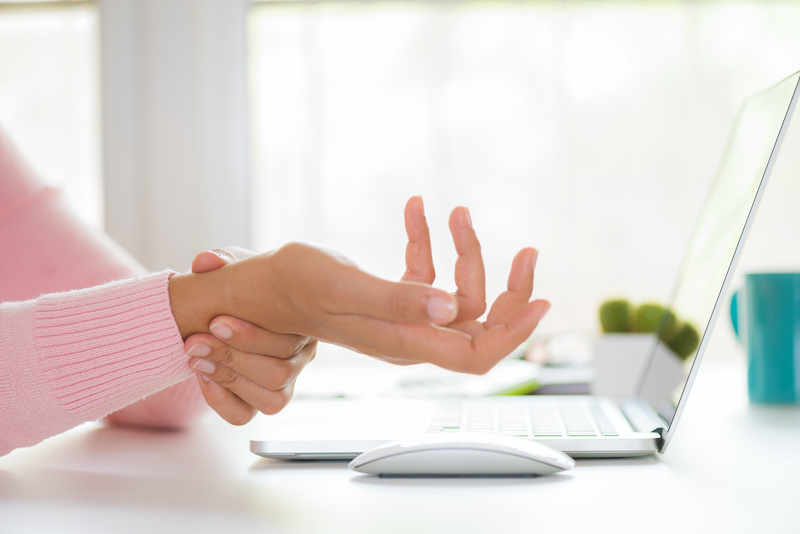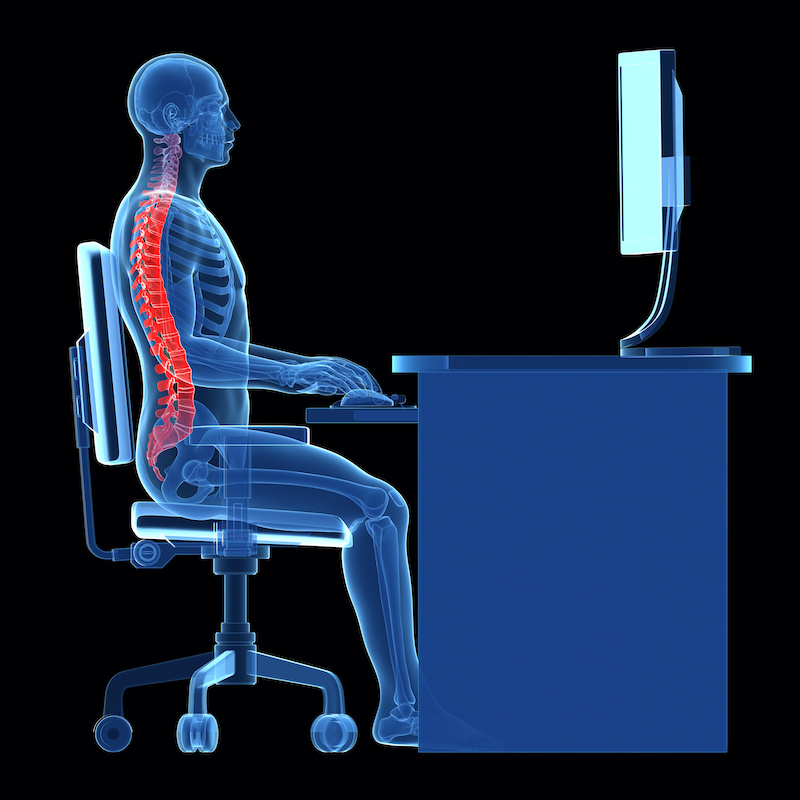While many of us have moved to working from home during the pandemic, there’s a range of health & safety considerations that go with working at home. Desk work is one of them. In this article we explore some simple steps to stretching at work.
Working at a desk is one of the many ways that you can damage your health and that people in modern life find themselves with a variety of complaints later on in life. However, most of these issues can be boiled down to one larger issue – not moving enough. To avoid the issues and keep yourself in tip top shape you just have to get yourself more involved at work. One of the easiest ways to do this is to start a stretching routine and stick to it in the morning, afternoon, and any time that you notice yourself feeling more tense.
Upper Body Stretches
The wrists and the arms often become one of the most painful areas of the body. People who work at a desk are often using a mouse, doing paperwork or typing, putting a large amount of stress on their wrists and arms. Start by rolling your wrists, going one way and then the other until they feel nice and limber, then start rolling the shoulders and arms. Finish out by threading fingers together and pressing them away from you for a complete arm and wrist stretch.
For stiff and sore backs, a gentle stretch on both sides of the body and then one all the way up the spine can be helpful. Put one arm behind your head and grasp the opposing shoulder, put the other arm up and lean as far as you can away from the side with the arm pointing up. Repeat on the other side, taking care to breathe and enjoy the feeling on an elongated spine. Finally, push yourself forward on your chair and then lean back from your shoulders, put your hands on the seat behind you and press upwards, hold for 10 seconds and repeat until your spine feels better.


Lower Body Stretches
The lower body can be tricky to work while seated, but simple actions like foot pumps, leg raises, and ankle rolls can really make a world of difference in your day. Sit with your chair as far away from the desk as possible, placing your hands on either side of the chair. Slowly lift your legs apart and then together, rotating the ankle as you raise and lower. Then pump the foot up and down, before rotating in a circle again.
If you are able to stand, standing on one leg for balance, small lunges to the side, stretching so that you are on your toes and then balancing on the heels of your feet are all great stretches as well. Make sure that you do the same stretches on both sides of the body or you will create stress that can actually make you feel worse.
Whole Body Stretches
If you have the ability to move around and enough space to work the whole body, consider whole body stretches rather than focusing on a single part of the body. Stand with your feet apart and stretch your arms above your head, lean to the side and then switch the other way. Reach all the way for the ceiling and stand on your toes, then balance on your heels and put your arms out in front of you, stretching them and gently rotating the wrists. Finally, do a few squats, taking the time to properly center your weight and feeling the stretch through your legs before allowing yourself to come back up.
Taking 5 minutes out of your work day to stretch and make sure that your body feels good can make you more productive at work, but can also help you enjoy your time away from work to a greater extent. Be familiar with how your body feels when you stretch, look into ergonomic options for your furniture, and look after your health in other ways to get the biggest benefits from this and any other stretches or exercises.
You may also like to read Safework Australia’s content on Sedentary Work
If you need any support for your work health & safety program for your office schedule a call with a Safetysure consultant on 1300 087 888.
You can download a working from home checklist here
Note: The information contained in this article is general in nature and not intended as specialist advice. Please consider a personal health & safety plan relative to your circumstances and medical conditions.









Leave A Comment